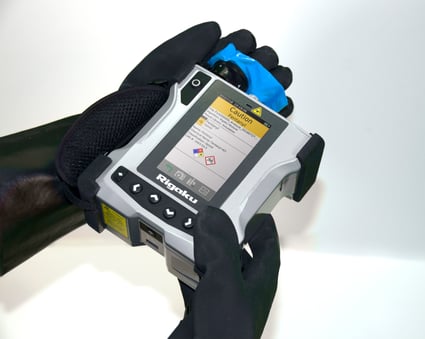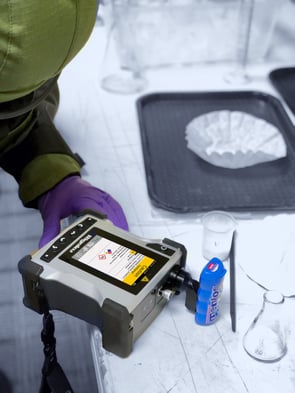The mortal imperative of reliable drug screening at overdose prevention centers

 February 17, 2022 - Drug screening isn’t the first thing people think about when spectroscopy comes to mind. But if it were, there would be far fewer involuntary overdose deaths.
February 17, 2022 - Drug screening isn’t the first thing people think about when spectroscopy comes to mind. But if it were, there would be far fewer involuntary overdose deaths.
Addiction shouldn’t be a fatal affliction. As the proliferation of highly deadly drugs hits all-time highs, the United States is exploring progressive methods of overdose prevention. It’s more important now than ever before. The nation’s overdose rate increased by 28.5% between April of 2020 and 2021, totaling more than 100,000 deaths annually.
Saving lives in this vulnerable population requires quality medical care through social and health programs.
New York City health officials knew they had to try something new to save lives after a record 2,000-plus overdose deaths were reported in 2020. The city’s overdose prevention centers opened Nov. 30, 2021, to offer substance abusers a safe place to take drugs while monitored by healthcare staff.
And NYC may not be alone for long. Cities like Philadelphia, San Francisco, Boston and Seattle are considering overdose prevention centers as well.
Vital standards are still being set in this field. One of them is enacting safe drug screening procedures. Relying on chemical reagent testing is a poor and potentially dangerous norm to set for this emerging healthcare paradigm.
The things that last are built on solid foundations. And the most concrete, comprehensive drug screening technology available today is a Raman spectrometer. A simple handheld scanner allows staff to safely and efficiently prescreen drugs that are entering their facility.
Overdoses are becoming common at overdose prevention centersWhen overdose prevention centers opened in NYC, it reportedly took two weeks to serve more than 300 people and avert at least 25 overdose deaths. That’s a good start, but it’s not a complete success. Averting a fatality isn’t overdose prevention. It’s overdose treatment.
When someone overdoses, staff members at NYC sites administer naloxone to reverse it. Unfortunately, naloxone (aka Narcan) isn’t 100% effective, especially in the long term. No preventive measures are being implemented to prevent the overdose from occurring, and as a result, the lifesaving efforts of this program too often rely on Narcan.
Complications with overdose treatment
Overdoses can cause hypoxic or anoxic brain injury, even if Narcan is administered quickly. Patients with heart or respiratory issues and other preexisting conditions are more likely to suffer complications from Narcan, especially with repeated use.
And since Narcan is commonly administered through nasal passages, a simple stuffy nose can obstruct the medication from entering a patient’s system. Every second of delayed treatment increases the likelihood of brain damage.

Staff safety and insufficient screening
Staff members and administrators also risk encountering highly lethal substances like fentanyl, which can be unknowingly absorbed through direct contact or airborne particle inhalation.
Overdose prevention centers are still in their infancy. An exposure-related injury or fatality among staff members, itself a tragedy to family and friends, would also negatively affect public perception of a policy still in its earliest, most vulnerable stages.
With fentanyl’s proliferation as an unknown additive, every narcotic should be screened before the container is unsealed and the user allowed to ingest an untested narcotic. But care providers must handle the substance if they rely on notoriously fallible reactive agent tests for their drug screenings.
That leaves a few layers of PPE to safeguard their health and wellbeing.
There is a better, safer way.
Advanced drug screening prevents overdoses
Healthcare providers at overdose prevention centers (screeners) can use handheld Raman laser technology to scan through unopened containers and access results in less than one minute from an onboard library database. If fentanyl is detected, the user will be alerted right away.
Raman scanners can analyze liquids, powders, gels and more, whether in a translucent container or already out in the open. If a patient spills an unknown substance on their clothing, care providers can find out what it was from as little as a residue stain.
Every known narcotic, along with common precursors and cutting agents, are included in a regularly updated onboard library.
The device’s easy-to-read monitor includes touchscreen capabilities, but it also comes with buttons that are easily used in heavy PPE.
First responders and hazmat specialists already protect themselves with these safe and reliable drug testers. Don’t those who care for one of our most vulnerable populations deserve this level of security as well?
HIHA saves lives: Try a handheld drug checker for free
Government health administrators can access Raman drug detection product trials through our Human Infrastructure Health & Awareness (HIHA) program. HIHA is a safety rail system intended for the reduction of fentanyl-related fatalities for long-term addicts and does not support recreational or otherwise enhanced drug use.
Raman laser technology sets a new standard for safety and efficacy at overdose prevention centers. This mitigation strategy could help save lives for years to come, but it must be implemented first.
Rigaku’s HIHA pilot program will provide ResQ CQL 1064 nm Raman handheld units and train your staff on how to use them. Then we’ll be there with 24/7 live support at no charge.
Healthcare providers at overdose prevention centers have a difficult road ahead. We’re here to help keep them and their patients safe as new centers develop across the nation.
Interested government health administrators can reach out to us for more information on the ResQ CQL or contact a Rigaku representative.


